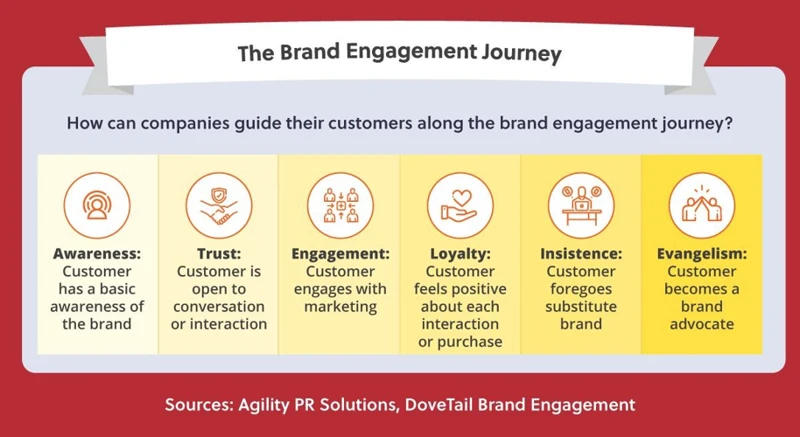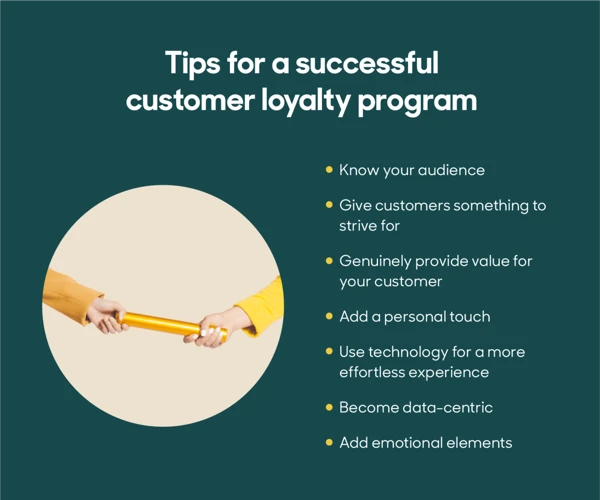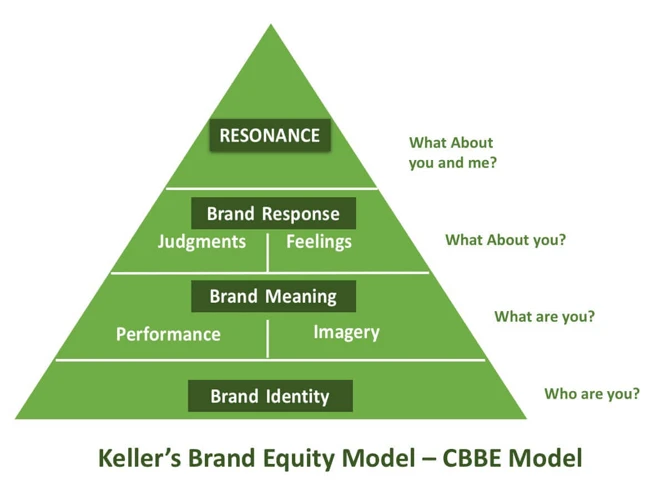In today’s competitive market, building a strong brand loyalty is essential for businesses to thrive. A loyal customer base not only provides a steady stream of revenue but also acts as a shield against rival tactics and public relations mishaps. Satisfaction alone is not enough to guarantee loyalty, as customer needs and preferences can change over time. To create a self-sustaining machine of brand loyalty, it is crucial to understand the importance of developing a unique brand identity that resonates with your target market. By implementing a customer loyalty program, personalizing interactions, and encouraging creativity, brands can establish trust, enhance customer experiences, and reward loyalty. In this article, we will explore various strategies for nurturing and measuring brand loyalty, along with case studies showcasing successful examples in different industries. So, let’s dive in and discover how to create a brand loyalty powerhouse that stands the test of time.
Contents
- 1. Understanding Brand Loyalty
- 2. Tips for Creating Brand Loyalty
- 3. Nurturing Brand Loyalty Over Time
- 4. Measuring and Monitoring Brand Loyalty
- 5. Case Studies: Successful Brand Loyalty Examples
- 6. Conclusion
-
Frequently Asked Questions
- 1.4 How can a customer loyalty program help in nurturing brand loyalty?
- 2.5 How can streamlining purchasing processes contribute to brand loyalty?
- 3.4 What role does personalization and customization play in nurturing brand loyalty?
- 4.4 How can analyzing customer engagement help in measuring brand loyalty?
- 5.4 What are some successful examples of brand loyalty in the retail industry?
- 6.1 What are the key takeaways for building a self-sustaining machine of brand loyalty?
- 7.1 How can a brand create a unique brand identity that resonates with its target market?
- 8.1 How does rewarding loyalty contribute to building brand loyalty?
- 9.1 How can tracking repeat purchases help in measuring brand loyalty?
- 10.1 What are some effective strategies for enhancing customer experiences?
- References
1. Understanding Brand Loyalty

Building brand loyalty is a crucial aspect of business success. It goes beyond just satisfying customers; it involves creating a strong connection and personal identity with the brand. When customers feel that a brand understands and represents them, they become loyal and are unlikely to switch to a competitor. This loyalty not only leads to repeat purchases but also drives customer advocacy and recommendations. To build brand loyalty, businesses need to understand their target audience, differentiate their brand, and consistently deliver positive experiences. By fostering trust, personalizing interactions, and rewarding loyalty, brands can create a self-sustaining machine of brand loyalty that generates long-term success.
1.1 What is Brand Loyalty?
Brand loyalty refers to the tendency of customers to repeatedly choose and purchase products or services from a particular brand over its competitors. It is a measure of the customer’s strong attachment and preference for a specific brand due to positive associations and experiences.
When customers exhibit brand loyalty, they consistently choose the same brand for their purchases, even if there are other options available. This loyalty is built on the customer’s belief in the value, quality, and image of the brand, which they perceive to be superior to other brands in the market.
Unlike customer loyalty, which can be influenced by deals and discounts, brand loyalty goes beyond price considerations. Brand-loyal customers are willing to pay a premium for the brand they trust and believe in. They prioritize their connection with the brand and the alignment of its values with their own.
Brand loyalty is not only about repeat purchases but also about the customer’s advocacy and recommendation of the brand to others. Loyal customers become brand ambassadors, sharing their positive experiences and opinions about the brand on social media channels and other platforms.
To foster brand loyalty, businesses need to focus on providing exceptional customer service and consistently meeting customer expectations. By creating a positive brand image, aligning with customer values, and continuously improving based on customer feedback, brands can cultivate a loyal customer base that chooses their brand over competitors.
Brand loyalty is a powerful asset for businesses as it leads to increased customer retention, positive word-of-mouth, and ultimately, sustainable growth. By prioritizing brand loyalty, businesses can create a self-sustaining machine that attracts and retains customers, protects against competition, and builds a strong reputation in the market.
For more information on strategies to build brand loyalty, you can read our article on the importance of consistency in building brand loyalty.
1.2 Importance of Brand Loyalty
Brand loyalty plays a crucial role in the success and growth of a business. It offers numerous benefits that contribute to the overall performance and reputation of a brand. Let’s explore why brand loyalty is so important:
Competitive Advantage: Brand loyalty provides a competitive edge in the market. When customers are loyal to a brand, they are less likely to switch to a competitor. This stability in customer base gives the business an advantage over rivals, as it ensures a steady stream of sales and revenue.
Increased Revenue: Loyal customers not only make repeat purchases but also show a willingness to invest in higher-priced products or services. Their loyalty translates into higher average order values and increased revenue for the business. Brands that successfully cultivate loyalty can maximize the revenue potential of their existing customer base.
Cost Savings: Brands with loyal customers can save on marketing and advertising expenses. Loyal customers are more likely to recommend the brand to others, resulting in positive word-of-mouth and organic growth. This reduces the need for extensive promotional efforts and allows the business to allocate resources more efficiently.
Positive Brand Reputation: Loyal customers are often brand advocates who refer the brand to others. Their recommendations enhance the brand’s reach and credibility, leading to a boost in its reputation within the market. A strong brand reputation attracts new customers and strengthens the loyalty of existing ones.
Valuable Feedback: Loyal customers have a deep understanding of the brand and its offerings. Their feedback, suggestions, and opinions can provide valuable insights for product or service improvement. By listening to their loyal customers, brands can drive innovation, enhance customer experiences, and ensure continuous improvement.
Brand loyalty offers a competitive advantage, generates positive word-of-mouth, increases revenue, saves costs, enhances brand reputation, and provides valuable feedback. It is a crucial factor in building a self-sustaining brand that thrives in the market. By prioritizing brand loyalty and implementing strategies to nurture it, businesses can create a strong foundation for long-term success.
Learn more about how to harness the power of brand-loyal customers as brand advocates.
2. Tips for Creating Brand Loyalty

To create a strong brand loyalty, it is important to implement effective strategies that resonate with your target market. Consistency is key in establishing a recognizable brand identity across all touchpoints, from advertising campaigns to customer support. Enhancing customer experiences through personalized interactions and exceptional service can also foster loyalty. Additionally, ensuring optimal product quality and streamlining purchasing processes can further enhance customer satisfaction. By implementing a customer loyalty program, brands can reward loyalty and encourage repeat purchases. These tips for creating brand loyalty will help businesses build trust, connect with customers on a personal level, and ultimately cultivate a loyal customer base.
2.1 Consistency is Key
Consistency is a vital factor in building brand loyalty. Customers want to have confidence that a brand will deliver on its promises every time, not just when it’s convenient. Consistently delivering good products and services across the organization, along with meaning what is said and saying what is meant, can separate a brand from its competitors and lay the foundation for extraordinary growth.
To build trust and loyalty, it’s important for a brand to be consistent in both its messaging and the quality of its products. Customers want to reliably recreate the positive experiences they have with a brand every time they make a purchase. This assurance that they will consistently receive a satisfying experience is what builds their loyalty.
Consistency also creates positive buzz around a brand. When customers consistently receive a reliable and satisfying experience, they are more likely to share their positive experiences with others. This word-of-mouth promotion can further enhance a brand’s reputation and attract new customers.
By being consistent in delivering on promises, a brand can build a strong foundation of trust with its customers. This trust is essential for long-lasting brand loyalty. When customers trust that a brand will consistently deliver what it promises, they are more likely to remain loyal and continue to support the brand.
Consistency in brand loyalty is rated as the most important factor by 41 percent of consumers. This indicates that customers value a brand’s reliability and consistency over other factors such as authenticity and transparency.
In order to maintain consistency, brands should focus on delivering a consistent experience across all touchpoints, from marketing materials to customer interactions. This means ensuring that the brand’s message and values are consistently communicated and reflected in all aspects of the customer experience.
Consistency is key in building brand loyalty. Customers want to reliably recreate positive experiences with a brand, and consistency in delivering on promises is what builds trust and loyalty. By consistently providing good products and services and maintaining a consistent brand experience, brands can separate themselves from competitors and reach extraordinary heights.
2.2 Enhancing Customer Experiences
Enhancing customer experiences is a crucial aspect of building brand loyalty. When customers have positive experiences with a brand, they are more likely to develop a strong connection and remain loyal in the long run.
To enhance customer experiences, brands should focus on delivering exceptional service and personalized interactions. By understanding the individual needs and preferences of customers, brands can tailor their approach and provide a more meaningful experience.
One way to enhance customer experiences is by implementing identity-driven personalization. This involves using customer data to create personalized content and offers that resonate with each individual. By making customers feel valued and understood, brands can strengthen the bond and increase loyalty.
Another strategy is to encourage creativity and allow customers to engage with the brand in unique ways. Running contests or campaigns that involve user-generated content can not only showcase how customers utilize the brand’s products or services but also create a sense of community and belonging. This reciprocity between the brand and the customer fosters a deeper connection and loyalty.
Additionally, brands can capitalize on social loyalty by leveraging the power of social media. Encouraging customers to share their experiences and recommend the brand to their network can significantly impact brand loyalty. By creating a positive buzz and generating word-of-mouth, brands can attract new customers and reinforce loyalty among existing ones.
To summarize, enhancing customer experiences is a key strategy for building brand loyalty. By personalizing interactions, encouraging creativity, and leveraging social loyalty, brands can create meaningful connections with their customers and foster long-term loyalty.
Link: Brand Loyalty Through Exceptional Customer Experiences
2.3 Optimal Product Quality
When it comes to creating brand loyalty, one of the key factors is offering optimal product quality. Customers want to know that they can trust your brand to consistently deliver high-quality products that meet their needs and expectations.
To achieve optimal product quality, it is important for brands to invest in rigorous quality control processes. This ensures that every product that reaches the market meets the highest standards of excellence. By consistently delivering products that are reliable, durable, and perform as promised, you can build trust and loyalty with your customers.
Additionally, it is crucial to listen to customer feedback and use it to continuously improve your products. Actively seeking feedback through surveys, reviews, and customer service interactions allows you to identify areas for enhancement and address any issues or concerns that may arise. By demonstrating that you value customer input and are committed to delivering the best possible products, you can further strengthen brand loyalty.
Brands can differentiate themselves by highlighting the unique features and benefits of their products. This can be done through effective marketing and communication strategies that clearly articulate how your products stand out from the competition. By showcasing the value and advantages of your offerings, you can create a compelling reason for customers to choose your brand over others.
Optimal product quality plays a critical role in building brand loyalty. By consistently delivering high-quality products, actively seeking customer feedback, and effectively communicating the unique attributes of your offerings, you can establish a reputation for excellence and earn the trust and loyalty of your customers.
To learn more about the importance of consistency in building brand loyalty, visit our article on the importance of consistency. Additionally, explore the power of rewards for brand loyalty in our article on the power of rewards.
2.4 Streamlined Purchasing Processes
Streamlined purchasing processes play a crucial role in creating and maintaining brand loyalty. These processes involve optimizing the way customers purchase products or services from your brand, ensuring a smooth and efficient experience. By focusing on enhancing the purchasing journey, brands can increase customer satisfaction and build long-term loyalty.
One key aspect of streamlined purchasing processes is ensuring convenience for customers. This can be achieved by offering multiple purchasing channels, such as online platforms, mobile apps, and physical stores. By providing various options, customers can choose the most convenient method that suits their preferences and needs.
Another important factor in streamlined purchasing processes is efficient order fulfillment. Brands should strive to minimize the time it takes for customers to receive their orders. This can be achieved through effective inventory management, timely order processing, and reliable shipping and delivery services. By ensuring prompt and accurate order fulfillment, brands can create a positive impression and reinforce customer loyalty.
Additionally, transparency and simplicity in the purchasing process are essential. Customers should have clear visibility into pricing, discounts, and any additional charges. Brands should also make the checkout process as straightforward as possible, minimizing the number of steps and eliminating unnecessary complexities. This helps to reduce friction and frustration, ultimately enhancing the overall purchasing experience.
Integrating technology can greatly streamline purchasing processes. Implementing user-friendly interfaces, secure payment systems, and efficient customer relationship management (CRM) software can significantly improve the efficiency and effectiveness of the entire purchasing journey. By leveraging technology, brands can automate tasks, personalize interactions, and provide seamless experiences, thereby fostering brand loyalty.
Streamlining purchasing processes is a critical aspect of creating and maintaining brand loyalty. By focusing on convenience, efficient order fulfillment, transparency, simplicity, and technology integration, brands can optimize the purchasing journey and provide exceptional experiences for their customers. This, in turn, can strengthen brand loyalty, increase customer satisfaction, and drive long-term success.
3. Nurturing Brand Loyalty Over Time

To nurture brand loyalty over time, businesses must focus on building strong relationships with their customers. This involves building trust, personalizing interactions, and rewarding loyalty. By consistently delivering value and maintaining a sense of identity, businesses can create a connection with their customers that goes beyond individual transactions. It’s important to tap into common values and engage in common causes to create long-lasting partnerships. Additionally, getting personal with customers on a regular basis helps to create a relationship based on quality and value. By being proactive and anticipating customer needs, businesses can strengthen brand loyalty and create a self-sustaining machine of customer advocacy.
3.1 Building Customer Trust
Building trust with customers is a crucial aspect of creating brand loyalty. Trust cannot be assumed just because a customer makes a purchase; it takes time to establish and maintain. In fact, 81% of customers consider trust to be an important factor when deciding to make a purchase.
To build trust, your company must consistently deliver value to customers. Reliability is a key factor in establishing trust, so it is essential to consistently follow through on your brand promise and do what you say you’ll do over time. By consistently delivering on your promises, your customers will perceive your brand as trustworthy.
One effective strategy for building trust is to implement a customer feedback loop. This means acknowledging and respecting the needs of your customers at every stage of the relationship, from the initial contact to their lifetime as a customer. Adopting a customer-centric mindset and consistently delivering exceptional brand experiences will put you in a strong position to earn customer loyalty.
To enhance customer trust, it is important to make excellent customer service a priority. Both the sales and support teams can play a role in developing customer trust by setting and meeting high service standards. Additionally, personalizing every interaction with your customers can create unique experiences that build trust. Research shows that 76% of consumers expect personalization, and they appreciate when brands use the information they have to improve their experience.
To truly build trust, it is essential to cultivate a company-wide customer-centric culture. Instead of only focusing on customer needs within the customer service and support departments, encourage all employees to think about your customers and how they can positively impact them in their roles. When your products and services reflect an emphasis on customer needs, it becomes easier to convince your audience that you genuinely care about their satisfaction.
By focusing on building customer trust, your company can create a solid foundation for long-term brand loyalty. Trust is a valuable asset that takes time to develop but can be instrumental in securing customer loyalty and differentiating your brand from competitors.
3.2 Personalization and Customization
Personalization and customization are key strategies for nurturing brand loyalty. Customers today expect personalized interactions and experiences from the brands they engage with. In fact, research shows that 80% of consumers are more likely to make a purchase when brands offer personalized customer experiences. It’s important for brands to understand their customers better and know when and how to approach them.
One way to implement personalization is by using data to personalize survey questions. By tailoring survey questions to each individual customer based on their preferences and past interactions, brands can gather more relevant and valuable insights.
Another effective strategy is to use geolocation technology to personalize interactions based on the customer’s location. For example, a retail website can offer different product suggestions and promotions to customers in different regions or countries, taking into account local preferences and seasonal trends.
Offering recommendations based on past purchases is a great way to personalize the customer experience. By analyzing a customer’s purchase history and browsing behavior, brands can provide personalized product recommendations that are tailored to their individual interests and preferences.
Personalization and customization can also be applied to website design and user experience. For example, Home Depot personalizes its website pages and app based on users’ locations and the season. This means that a shopper looking for gardening equipment would see different suggestions if they were in Florida compared to if they were in Maine.
Walmart is another example of a brand that heavily emphasizes personalization in its website redesign. By providing a customized and easy-to-navigate experience, Walmart aims to stand out from its competition and create a stronger bond with its customers.
However, it’s important to note that while many retailers believe they offer personalization in their marketing, a significant number of customers disagree. This highlights the need for brands to continually assess and improve their personalization strategies to ensure they are truly meeting their customers’ expectations.
Personalization is a crucial aspect of nurturing brand loyalty. By adapting the customer experience based on individual preferences and behaviors, brands can create smoother customer journeys and establish a stronger connection with their customers. Implementing personalization strategies such as data-driven survey questions, geolocation-based customization, and personalized recommendations can help brands differentiate themselves and deliver a more tailored and engaging experience.
3.3 Rewarding Loyalty
Rewarding loyalty is a crucial aspect of building a strong brand following. In Loyalty 3.0, the focus is on engaging customers both inside and outside the buying cycle. By recognizing and appreciating non-transactional interactions, brands can foster a sense of brand love and make customers feel good about their association with the brand.
One effective way to reward loyalty is by encouraging customers to contribute user-generated content on social media. When customers share their experiences and positive feedback about a brand, it not only strengthens their loyalty but also serves as a powerful endorsement for others. Brands can also incentivize customers to write product reviews, take product-related quizzes, or refer friends, rewarding them for their active involvement.
Loyalty 3.0 emphasizes engaging customers in everyday activities that are related to the brand. For example, customers can be rewarded for going for a run in their new shoes or wearing clothing items with smart tags embedded in them. These activities create a deeper connection between the customer and the brand, enhancing loyalty and satisfaction.
In Loyalty 3.0, the goal is to create a seamless and personalized experience for customers. By unifying all previous loyalty program innovations, brands can deliver emotional highs to customers more frequently. This can be achieved by rewarding loyalty not just during purchase events but also for various interactions and activities that align with the brand’s values and resonate with the customer’s personality.
By implementing a comprehensive loyalty program that rewards customers for their engagement, brands can build trust, foster brand love, and create a self-sustaining machine of brand loyalty. In the next section, we will explore strategies for measuring and monitoring brand loyalty to ensure its continued success.
4. Measuring and Monitoring Brand Loyalty

Measuring and monitoring brand loyalty is a crucial aspect of building a strong brand. By accurately tracking repeat purchases, collecting customer feedback, and analyzing customer engagement, businesses can gain valuable insights into the effectiveness of their brand loyalty strategies. Tracking repeat purchases allows businesses to measure the number of repeat customers and evaluate the success of their loyalty programs. Collecting customer feedback provides valuable information about customer satisfaction and areas for improvement. Analyzing customer engagement, such as measuring Net Promoter Score (NPS), helps businesses understand how customers perceive their brand and their likelihood to recommend it to others. By consistently monitoring these metrics, businesses can make data-driven decisions to enhance brand loyalty and ensure long-term success.
4.1 Tracking Repeat Purchases
Tracking repeat purchases is a crucial component of measuring and monitoring brand loyalty. Repeat purchase rate (RPR) is a key metric that indicates the percentage of customers who come back to make a second purchase. By tracking RPR, businesses can gauge customer loyalty, retention, and revenue, providing valuable insights into the success of their brand loyalty efforts.
To effectively track repeat purchases, businesses can leverage various strategies and tools. One approach is to analyze first-party data using artificial intelligence (AI) technology. By combining and analyzing this data, businesses can uncover each customer’s interests and preferences. This enables them to be more proactive in recommending relevant products or services during the customer’s next visit to the website, increasing their share of wallet.
Monitoring RPR allows businesses to assess the impact of their customer retention strategies. By observing changes in RPR over time, businesses can determine if their efforts to nurture brand loyalty are effective or if adjustments are needed. For example, if RPR increases, it indicates that customers are returning for future purchases, validating the success of the brand loyalty initiatives. On the other hand, a decline in RPR may indicate that customers are not sufficiently engaged or satisfied, prompting the need for improvements in areas such as personalization, post-purchase communication, or customer service.
Ultimately, tracking repeat purchases provides businesses with valuable insights into customer behavior and the effectiveness of their brand loyalty strategies. By optimizing their RPR, businesses can create a sustainable revenue stream, maximize the lifetime value of each customer, and foster consistent growth.
4.2 Collecting Customer Feedback
Collecting customer feedback is a crucial step in understanding customer satisfaction and improving your products or services. There are several effective methods for collecting customer feedback:
1. Customer service interactions: Your customer service team can directly collect feedback from customers during interactions. They can gather insights into common issues or complaints and relay them to the relevant teams.
2. Focus groups: Conducting focus groups involves bringing together a small group of customers to provide feedback on a specific product or service. This structured approach allows for in-depth discussions and valuable insights.
3. User testing: User testing involves having customers test a product or service and provide feedback on their experience. This method is particularly useful for new products or features that are still in development.
4. Surveys: Surveys are a common way to collect feedback from customers. They can be distributed via email, social media, or on your website. Surveys can be structured with multiple-choice questions or open-ended, allowing customers to provide detailed feedback.
To make it easy for customers to provide feedback, use simple and clear language. Avoid technical jargon or complicated questions that may confuse customers. Offer multiple channels for feedback, such as email, social media, or feedback forms on your website.
Once you collect customer feedback, it’s important to act on it. Use the feedback to make changes and improvements to your product or service. Be transparent with customers about the changes you’re making based on their feedback. By incorporating customer feedback into your business decisions, you can drive growth and improve customer satisfaction.
Remember, collecting feedback is an ongoing process. Regularly check in with your customers and refine your feedback collection methods over time to ensure you stay in tune with their needs and preferences.
4.3 Analyzing Customer Engagement
Analyzing customer engagement is a critical aspect of measuring and monitoring brand loyalty. It involves examining the level of interaction and involvement that customers have with your brand. By understanding how customers engage with your brand, you can gain valuable insights into their preferences, needs, and behaviors.
One key aspect of analyzing customer engagement is tracking their interactions with your brand across different touchpoints. This can include monitoring their website visits, social media interactions, email responses, and customer service interactions. By analyzing these interactions, you can identify patterns and trends that can help you tailor your marketing strategies and improve the overall customer experience.
Another important aspect of analyzing customer engagement is collecting and analyzing customer feedback. This can be done through surveys, focus groups, or online reviews. By listening to your customers’ opinions and experiences, you can gain valuable insights into their satisfaction levels and areas for improvement. This feedback can help you identify areas where you may be falling short in terms of meeting customer expectations, allowing you to make necessary adjustments to enhance customer engagement.
Analyzing customer engagement involves measuring customer satisfaction and dissatisfaction. This can be done through various metrics, such as Net Promoter Score (NPS) or customer satisfaction surveys. These measurements can provide you with valuable information about how satisfied your customers are with your products or services, as well as areas where you may need to make improvements to foster greater engagement.
Analyzing customer engagement is crucial for understanding how customers interact with your brand and for identifying areas where you can enhance the customer experience. By continuously monitoring and analyzing customer engagement, you can make data-driven decisions to improve customer satisfaction, build lasting relationships, and ultimately, drive brand loyalty.
By prioritizing customer engagement and consistently analyzing and optimizing it, businesses can create a self-sustaining machine of brand loyalty that withstands the test of time.
5. Case Studies: Successful Brand Loyalty Examples
Case Studies: Successful Brand Loyalty Examples
In this section, we will examine real-life case studies of successful brand loyalty examples in various industries. These examples demonstrate how companies have effectively built and maintained a loyal customer base.
Retail Industry: One notable example is Apple, which has achieved an outstanding brand loyalty score of 92%. This tech giant has retained a higher percentage of existing clients than any other company in any industry. Apple’s brand power, revolutionary technology, state-of-the-art design, and stellar customer service have contributed to its success in fostering brand loyalty.
Technology Sector: Another industry leader in brand loyalty is Amazon. Through consistently providing fast and reliable delivery services, including same-day or next-day shipping, Amazon has acquired a large base of brand-loyal customers. Its user-friendly online shopping experience, with easy navigation, clear product descriptions, and helpful customer reviews, has also played a significant role in its success.
Food and Beverage Industry: Coca-Cola is a prime example of a brand that has cultivated a loyal following. Its cult-like brand loyalty is sustained over time, creating a close-knit community of dedicated followers. Coca-Cola’s ability to provide customers with not just a product, but a lifestyle they can embrace, has contributed to its enduring success.
These case studies demonstrate the importance of factors such as exceptional customer service, quality products, and creating a sense of community and lifestyle around the brand. By understanding and implementing these strategies, businesses can create a self-sustaining machine of brand loyalty that stands the test of time.
5.1 Brand Loyalty in the Retail Industry
In the retail industry, brand loyalty plays a crucial role in the success of businesses. With countless options available to consumers, it is impressive to see how some brands manage to attract and retain loyal customers. Retailers that have successfully cultivated brand loyalty have created a strong bond with their customers, resulting in repeat purchases and long-term relationships.
One example of brand loyalty in the retail industry is Levi’s, a popular denim jeans brand. Despite the availability of jeans from various other brands and retailers, many consumers choose to go straight to a Levi’s store when they need a new pair of jeans. These loyal customers do not think twice about their decision and continue to choose Levi’s over other options.
The key to building brand loyalty in the retail industry lies in understanding and meeting the needs of customers. Retailers must consistently provide a positive and consistent experience that aligns with their brand’s values. By enhancing customer experiences through excellent customer service, personalized recommendations, and a seamless shopping process, retailers can create a strong emotional connection with their customers.
Maintaining optimal product quality is essential for building brand loyalty in the retail industry. Customers who trust a brand to consistently deliver high-quality products are more likely to remain loyal. Retailers should focus on delivering products that meet or exceed customer expectations, ensuring that customers continue to choose their brand over competitors.
Streamlining the purchasing process is another crucial aspect of fostering brand loyalty in the retail industry. Customers appreciate convenience and efficiency when making purchases. By providing user-friendly websites, easy-to-navigate mobile apps, and efficient checkout processes, retailers can make the shopping experience more enjoyable for their customers, increasing the likelihood of repeat purchases.
Brand loyalty in the retail industry is a valuable asset for businesses. By consistently meeting customer needs, enhancing customer experiences, maintaining product quality, and streamlining the purchasing process, retailers can cultivate brand loyalty and secure a loyal customer base. Adopting these strategies will help retailers thrive in the competitive retail landscape and create a self-sustaining machine of brand loyalty.
5.2 Brand Loyalty in the Technology Sector
The technology sector is one industry where brand loyalty plays a significant role in the success of companies. Two notable examples of brand loyalty leaders in this sector are Apple and Louis Vuitton.
Apple, known for its revolutionary technology and state-of-the-art design, has built an unwavering brand image that has resulted in a devoted customer base. Despite not having a traditional loyalty program with points or rewards, Apple fosters loyalty through its focus on quality. Each new product release from Apple is eagerly anticipated by customers who value the well-designed, user-friendly, and reliable nature of their products. This sense of prestige around Apple products has created a loyal customer base that consistently purchases the latest models when they become available. Apple’s outstanding brand loyalty score of 92% in 2021 is a testament to their ability to retain a higher percentage of existing clients compared to any other company in any industry.
In the technology sector, optimal product quality is a crucial factor in building brand loyalty. Customers expect technology products to be reliable, efficient, and innovative. Companies that consistently deliver high-quality products gain the trust and loyalty of their customers. This is evident in Apple’s success, where their focus on quality has contributed to their status as the world’s most valuable brand.
Additionally, brand loyalty in the technology sector is influenced by customer service. Companies that prioritize stellar customer service, like Apple, create a positive customer experience that fosters loyalty. When customers receive efficient and helpful support, it strengthens their connection to the brand and increases the likelihood of repeat purchases.
Brand loyalty in the technology sector is built upon the pillars of quality products and stellar customer service. Companies like Apple have successfully capitalized on these elements, creating a sense of prestige and trust that keeps customers loyal and eager to purchase their latest offerings. In an industry where competition is fierce, establishing and maintaining brand loyalty is crucial for long-term success.
5.3 Brand Loyalty in the Food and Beverage Industry
Brand loyalty in the food and beverage industry is a critical factor for success in today’s competitive market. With the rise of digital shopping and easy access to online reviews, customer loyalty has become harder to sustain. However, it is still possible to build and maintain brand loyalty by leveraging data and implementing an omnichannel sales and marketing strategy.
In this industry, customers are increasingly making buying decisions based on online recommendations. This shift in consumer behavior has had a significant impact on marketing processes. Despite this change, branding remains just as relevant as ever.
The beverage market, in particular, is highly competitive, especially in the craft beverage sector. To earn and maintain the loyalty of clients, businesses must find ways to stand out from the crowd. Online shopping has further complicated this challenge, as consumers often prioritize price and discounts over brand loyalty.
For food and beverage brands, it is crucial to focus on creating a welcoming and inclusive business environment. This will not only motivate employees but also attract and retain loyal customers. By understanding the factors that contribute to brand loyalty, businesses can develop strategies to increase their market share and growth rates.
Acquiring new customers through advertising and promotions can be expensive. It is more cost-effective to serve current customers and nurture their loyalty. To achieve this, hospitality managers should prioritize building customer trust, personalization, and customization, as well as rewarding loyalty. These strategies will help foster long-term relationships with customers and drive retail business and customer engagement.
To measure and monitor brand loyalty, businesses can track repeat purchases, collect customer feedback, and analyze customer engagement. These insights will provide valuable information on customer satisfaction and loyalty levels, allowing businesses to make data-driven decisions to improve their brand loyalty strategies.
Brand loyalty is a key factor in driving success in the food and beverage industry. Despite the challenges posed by digital shopping and online recommendations, businesses can build and maintain brand loyalty by leveraging data, creating a welcoming business environment, and implementing effective loyalty strategies. By nurturing brand loyalty over time and continuously monitoring customer engagement, businesses can create a self-sustaining machine of brand loyalty that withstands the test of time.
6. Conclusion
Creating a self-sustaining machine of brand loyalty is crucial for businesses to thrive in today’s competitive market. By understanding the importance of developing a unique brand identity that resonates with the target market, brands can establish trust, enhance customer experiences, and reward loyalty. Consistency, optimal product quality, and streamlined purchasing processes are key factors in creating brand loyalty. Nurturing brand loyalty over time involves building customer trust, personalization and customization, and rewarding loyalty. Measuring and monitoring brand loyalty through tracking repeat purchases, collecting customer feedback, and analyzing customer engagement is essential for continuous improvement. Successful case studies in industries such as retail, technology, and food and beverage demonstrate the effectiveness of these strategies. By implementing these tips and strategies, businesses can create a brand loyalty powerhouse that stands the test of time.
Frequently Asked Questions
1.4 How can a customer loyalty program help in nurturing brand loyalty?
A customer loyalty program can help nurture brand loyalty by providing incentives and rewards to customers who repeatedly choose to engage with a brand. This program creates a sense of exclusivity and appreciation, making customers feel valued and more likely to continue their relationship with the brand.
2.5 How can streamlining purchasing processes contribute to brand loyalty?
Streamlining purchasing processes can contribute to brand loyalty by making it easier and more convenient for customers to make repeat purchases. When the purchasing process is smooth and efficient, customers are more likely to have a positive experience and develop trust in the brand, increasing their likelihood of remaining loyal.
3.4 What role does personalization and customization play in nurturing brand loyalty?
Personalization and customization play a crucial role in nurturing brand loyalty by creating a more tailored and relevant experience for customers. When brands take the time to understand and cater to individual customer preferences and needs, it enhances the overall customer experience and strengthens the emotional connection between the customer and the brand.
4.4 How can analyzing customer engagement help in measuring brand loyalty?
By analyzing customer engagement, brands can gain insights into how customers are interacting with their brand and its offerings. This data can help measure brand loyalty by identifying patterns of repeat engagement, measuring customer satisfaction levels, and understanding the effectiveness of loyalty-building strategies implemented by the brand.
5.4 What are some successful examples of brand loyalty in the retail industry?
Examples of successful brand loyalty in the retail industry include brands like Nike, Apple, and Amazon. These brands have cultivated a strong and loyal customer base through consistent product quality, exceptional customer service, and innovative marketing strategies. Their customers often form emotional connections with the brand, leading to repeat purchases and advocacy.
6.1 What are the key takeaways for building a self-sustaining machine of brand loyalty?
The key takeaways for building a self-sustaining machine of brand loyalty include understanding the importance of consistency, enhancing customer experiences, delivering optimal product quality, streamlining purchasing processes, building customer trust, personalizing interactions, rewarding loyalty, measuring repeat purchases, collecting customer feedback, analyzing customer engagement, and learning from successful brand loyalty examples in various industries.
7.1 How can a brand create a unique brand identity that resonates with its target market?
A brand can create a unique brand identity that resonates with its target market by conducting market research, understanding customer preferences and values, and aligning its messaging, visuals, and overall brand persona with those insights. By differentiating itself from competitors and authentically connecting with its target audience, a brand can establish a strong and memorable identity that attracts and retains loyal customers.
8.1 How does rewarding loyalty contribute to building brand loyalty?
By rewarding loyalty, a brand demonstrates appreciation and acknowledges the value of its customers. This act of recognition and incentivization strengthens the emotional bond between the customer and the brand, increasing the likelihood of repeat purchases, positive word-of-mouth, and continued loyalty.
9.1 How can tracking repeat purchases help in measuring brand loyalty?
Tracking repeat purchases allows brands to identify and quantify the level of loyalty among their customer base. It provides insights into the frequency and consistency of customer engagement, highlighting the effectiveness of loyalty-building efforts and indicating the brand’s ability to retain customers over time.
10.1 What are some effective strategies for enhancing customer experiences?
Some effective strategies for enhancing customer experiences include providing exceptional customer service, personalizing interactions, offering seamless and convenient purchasing processes, actively listening to customer feedback, and continuously improving product or service offerings based on customer needs and preferences. By prioritizing the customer experience, brands can create positive and memorable interactions that foster loyalty.







